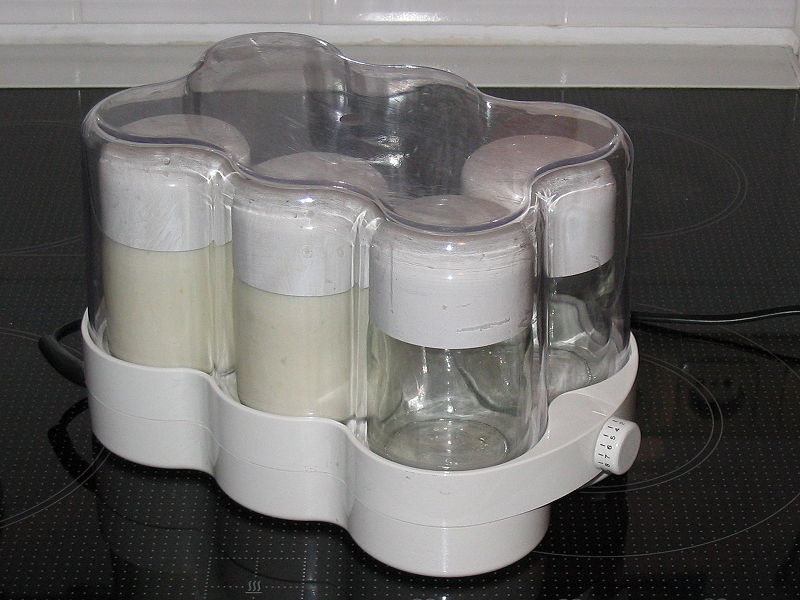Downloads:

General information
Types and uses
Keywords
Fermentation, vinegar, salt, sugar, acid, glucose, microorganisms, probiotics, preservation technique
Level

General information
Fermentation is an anaerobic biochemical process that occurs due to the growth of microorganisms in food, which, when competing for nutrients, originate a set of enzymatic chemical reactions to obtain energy through the cell. Glucose is one of the substances most used to start the fermentation process.
Microbial species are divided between bacteria and yeasts or molds, and can be naturally present in the food, or added to the fermentation. Plant foods, for example, already carry the bacteria needed for the fermentation.
It is believed that the discovery of fermentation was accidental, about 8,000 years ago, allowing for the preservation of food out of the cold. This process alters the organoleptic properties of the food in terms of flavor, color and texture, providing new and alternative ways to consume it. Fermented foods act as probiotics, as beneficial microorganisms promote digestion and facilitate the intestinal tract, providing medicinal and nutritional properties.
Fermentation can be achieved through solid or liquid foods. It is said that each fermentation is unique as it depends on the combination of microorganisms, the food, and the environment, namely temperature. Home fermentation is processed by the simple action of the environment to which the food is exposed, occurring by acidification of the pH. A pH below 5 prevents the development of most pathogenic microorganisms.
We can obtain a chemical fermentation (a mixture of sodium bicarbonate, acid and starch, as in the case of cakes) or a biological fermentation (containing microorganisms, as in the case of baker's yeast for making bread).
Types and uses
We can ferment various foods at home. Raw vegetables such as carrots, beets or cauliflower are examples of foods that can be fermented in a simple way. Once thoroughly cleaned, the food should have a uniform shape (grated, in pieces, or even whole) and placed in a suitable container, as its shape and size will affect the speed of fermentation. In the case of pickles, the container should be completely filled with vinegar to eliminate oxygen, closed, and stored in the fridge for two weeks to a month until ready for consumption. Carrots, for example, can be fermented with salt (simple preservation), vinegar (pickle), or sugar (homemade syrup).
According to the degradation of glucose molecules, fermentation can be divided into three main types:
- Lactic fermentation occurs through the transformation of glucose into lactic acid, applied in the preparation of products such as cheeses and yogurts;
- Alcoholic or ethylic fermentation occurs through the transformation of glucose into ethylic alcohol, as in products such as wine or beer, or in the manufacture of bread;
- Acetic fermentation occurs through the transformation of glucose into acetic acid, and it is used in the industrial manufacture of vinegar.
Description
Fermentation is an anaerobic biochemical process that occurs due to the growth of microorganisms in food, which, when competing for nutrients, originate a set of enzymatic chemical reactions to obtain energy through the cell. Glucose is one of the substances most used to start the fermentation process.
Labels
Benefits
Fermentation increases the shelf life of the food, taking advantage of its seasonality, and making it ready for consumption throughout the year. The organoleptic properties of the food also change, with its flavor becoming more intense and textured.
This conservation technique has health advantages. It can, for example, facilitate digestion and increase the bioavailability of certain minerals and vitamins, regulating the intestinal microbiota due to its probiotic effect. However, certain fermented foods, such as bread, or those that require the addition of citric acid, should be consumed with moderation.
Home fermentation is an ally of sustainability, namely by combating food waste, helping to prepare meals with products that can be preserved for several weeks, and which otherwise could deteriorate.
Representative Products
Bread, vinegar, soy (tofu).
Dairy products: fermented milk (by natural acidification of milk), yogurt, kefir, cheese.
Vegetables/pickles (onion, garlic, cauliflower, cucumber, carrot, beetroot, cabbage, olives).
Wine, kombucha, beer.
Risks
Always use sanitized containers and products in good condition to avoid cross contamination.
Do not use antibacterial products to clean food and containers for fermentation purposes.
Depending on the type of fermentation, it may be necessary to keep it refrigerated from the start (e.g., yogurt, fresh cheese). When using sterilized jars, we can keep the fermented food out of the fridge until the first opening.
Fermented vegetables should have a crunchy consistency and a vinegar taste.
Reject fermented foods that have an unpleasant smell or taste, sticky consistency, mold on the surface, or when the packaging presents and irregular or stuffed shape.
Certain fermented foods call for moderate consumption, such as bread and those that need the addition of citric acid.
Further references
https://www.heartfoundation.org.nz/about-us/news/blogs/fermented-foods-the-latest-trend
https://www.sciencedirect.com/topics/food-science/food-fermentation
https://www.khanacademy.org/science/ap-biology/cellular-energetics/cellular-respiration-ap/a/fermentation-and-anaerobic-respiration
https://www.fao.org/3/x0560e/x0560e07.htm
 Play Audio
Play Audio

